This article was medically reviewed by Tiffany Jumaily, MD and by wikiHow staff writer, Jessica Gibson. Dr. Tiffany Jumaily is a Board Certified Pediatrician and a fellow of the American Academy of Pediatrics (FAAP) based in Los Angeles, California. With over a decade of experience in the medical field, Dr. Jumaily specializes in identifying the root cause of symptoms and presenting manifestations of disease. She holds a BA in Biology from Boston University and an MD from Boston University School of Medicine. Her dedication to combining evidence-based allopathic medicine with complementary and alternative therapies has led to her being featured and cited in various platforms including U.S. News & World Report, Forbes, and CBS Los Angeles.
There are 12 references cited in this article, which can be found at the bottom of the page.
This article has been viewed 22,638 times.
If you want to use an aspirator to clear the nose or mouth of a congested baby, you can easily remove mucus, spit up, or saliva. To ease your child's congestion, use premade saline drops, which come in a squeeze bottle that only releases a few drops at a time. Administer the drops, and then use the aspirator to suction out the mucus. Research shows that the combination of saline and suctioning can relieve congestion caused by mild viral infections (such as colds) or allergies.[1]
Steps
Oral Suctioning
-
1Clear your baby's mouth if they have congestion or have vomited. If your baby has a cold, respiratory infection, or influenza, they might have trouble getting mucus, saliva, or vomit out of their mouth. If your baby makes choking or gurgling sounds and has a persistent cough, it's a good idea to use the infant aspirator to clear their mouth.
- Remember that you're not pulling out mucus from the back of their throat. Instead, you're just using the aspirator to take out the mucus, saliva, or vomit that's in their mouth.
- Sometimes, your baby might need both their nose and their mouth aspirated. If this is the case, always suction their mouth first.
-
2Lay the baby on their side. If the baby is vomiting or severely congested, lay them on their side to keep them from accidentally inhaling vomit or mucus. If possible, keep the baby’s chest slightly higher than their head to help the mucus or vomit drain out more easily.[2]Advertisement
-
3Compress the infant aspirator before inserting it in your child's mouth. Squeeze the bulb of the aspirator between your thumb, index, and middle fingers to force the air out of the bulb. Keep the bulb squeezed so it doesn’t refill with air.[3]
- Aim the aspirator away from the baby’s face while you squeeze out the air.
-
4Insert the aspirator and suction out 1 side of your baby's mouth. Put the tip of the aspirator into the side of the baby’s mouth, just inside the cheek. Release your thumb so the suction pulls the mucus, saliva, or vomit into the aspirator. Remove the aspirator from their mouth.[4]
- Remember, only suction material from inside the baby’s cheek. Don’t try to pull anything out of the back of their throat!
-
5
-
6Suction the other side of the baby's mouth. Squeeze the bulb to force out the air, then insert the tip of the aspirator near the other side of the baby's mouth. Release the suction to suck up more saliva, vomit, or mucus.[7]
- Clear the aspirator again before using it on the baby's nose.
Nasal Use
-
1Clear your baby's nose if it's blocked or congested. If your baby has trouble nursing, you hear a rattling near their nose or mouth, or you can see mucus stopping up their nostrils, clear their nose with an infant aspirator.[8]
- Studies show that using an infant aspirator with a saline solution is an effective way to manage upper respiratory infections.[9]
-
2Purchase a bottle of saline solution from a drug store.[10] The bottle that the saline comes in will make it easier to administer the drops. It releases only a small amount of the solution at once, so it will be less likely to harm your baby. However, you can also make your own saline and put it in a small dropper.
- To make your own saline, mix 1 cup (240 mL) of warm water with 1/4 teaspoon (1.4 g) of salt in a clean jar. Stir the mixture until the salt is dissolved.
- If you make your own saline, mix up a new batch every time you plan to clear your baby’s nose.
-
3Get out a bowl of warm water and a cloth. Set out a bowl of warm water and place a cloth near the baby. You can use these items to clear out the aspirator in between uses.[11]
-
4Place the baby on their back and hold them in place. It’s important to keep your baby from squirming away while you give them saline drops.[12] If you're clearing a very small baby's nose, try swaddling them so their arms can't wave around. For older babies, gently hold their arms down so they can't knock the aspirator out of your hand.
- If your baby is really squirmy, ask someone to help you keep the baby still while you clear their nose.
-
5Put 2 to 3 drops of saline solution into your baby's nostrils. Squeeze the saline solution bottle or nose dropper gently to put 2 to 3 drops of saline solution into each nostril. The saline solution will help thin the mucus in the baby's nose.[13] [14]
- Your baby may sneeze when the saline goes into their nose.
-
6Squeeze the bulb of the aspirator and insert the tip into a nostril. Squeeze the bulb of the aspirator with you thumb, index, and middle fingers to force out the air. Place the tip of the aspirator about 1⁄4 inch (0.64 cm) into your baby's nostril.[15]
- Avoid pushing the end of the aspirator deep into your child's nostril because this can damage their nose.
-
7Release your thumb to suction the nostril. This will make a vacuum that sucks the mucus out of the nostril and into the bulb.[16] If the bulb doesn't reinflate when you remove your thumb, take the bulb out and clean it. You'll need to suction the nostril again.[17]
- Sometimes the bulb doesn’t reinflate because it is pushed up against the inside of the baby’s nostril. Try pulling the tip of the aspirator back slightly to see if the bulb refills. If not, the aspirator is probably clogged.
-
8Clear the aspirator by squeezing it into a cloth or tissue. Remove the infant aspirator and squeeze it a few times over the cloth that's next to the baby. The mucus should squirt onto the cloth.[18]
- If there’s mucus sticking to the tip of the aspirator, wipe it away with a clean cloth or tissue.
-
9Wipe your baby's nose and suction the other nostril. Wipe away any mucus on the outside of your baby's nose with a clean tissue or cloth. Remember to squeeze the bulb of the aspirator before inserting the tip into the other nostril. Release the pressure to suction the other nostril.[19]
- Wiping away the mucus will help prevent skin irritation around your baby’s nose, and will also help keep their nostrils clear.
-
10Suction your baby's nose no more than 4 times a day. Because repeated suctioning can irritate or damage the inside of your baby's nose, limit how often you suction.[20]
- Suctioning your baby’s nose too often can lead to dryness, irritation, or nosebleeds.
- If your baby is still congested and you’re worried about overusing the aspirator, try placing a cool mist humidifier near their crib or sitting in the bathroom with them for 15 minutes with a hot shower running.[21]
Aspirator Care and Cleaning
-
1Squeeze the mucus, vomit, or saliva out of the aspirator. After you’re done using the aspirator, squeeze the bulb a few times onto a cloth or tissue. The excess mucus, vomit, or saliva should squirt out.[22]
-
2Suck soapy water into the bulb of the aspirator and squeeze it out. Fill a small bowl with warm, soapy water and squeeze the aspirator bulb. Insert the tip into the soapy water and release the bulb. The aspirator will fill with the warm soapy water. Squirt out all of the soapy water.[23]
- Do this several times, and shake the bulb after filling it with water to help loosen anything sticking to the inside.
-
3Fill the aspirator with clean water and squirt it out. Fill another bowl with clean water and squeeze the bulb of the aspirator. Insert the tip into the clean water and release the bulb so it fills with water. Squirt out the water.[24]
- Hot water works best for dissolving soap and residues inside the bulb.
-
4Let the aspirator air dry completely. Ensure that there's no water left in the aspirator bulb and set the aspirator down to air dry. Point the tip down so water can drip out as the aspirator dries.[25]
Expert Q&A
-
QuestionHow does a baby nasal aspirator work?
 Tiffany Jumaily, MDDr. Tiffany Jumaily is a Board Certified Pediatrician and a fellow of the American Academy of Pediatrics (FAAP) based in Los Angeles, California. With over a decade of experience in the medical field, Dr. Jumaily specializes in identifying the root cause of symptoms and presenting manifestations of disease. She holds a BA in Biology from Boston University and an MD from Boston University School of Medicine. Her dedication to combining evidence-based allopathic medicine with complementary and alternative therapies has led to her being featured and cited in various platforms including U.S. News & World Report, Forbes, and CBS Los Angeles.
Tiffany Jumaily, MDDr. Tiffany Jumaily is a Board Certified Pediatrician and a fellow of the American Academy of Pediatrics (FAAP) based in Los Angeles, California. With over a decade of experience in the medical field, Dr. Jumaily specializes in identifying the root cause of symptoms and presenting manifestations of disease. She holds a BA in Biology from Boston University and an MD from Boston University School of Medicine. Her dedication to combining evidence-based allopathic medicine with complementary and alternative therapies has led to her being featured and cited in various platforms including U.S. News & World Report, Forbes, and CBS Los Angeles.
Board Certified Pediatrician A nasal aspirator uses suction to remove the extra mucus from your baby's nose.
A nasal aspirator uses suction to remove the extra mucus from your baby's nose. -
QuestionWhat is the best way to loosen the mucus?
 Tiffany Jumaily, MDDr. Tiffany Jumaily is a Board Certified Pediatrician and a fellow of the American Academy of Pediatrics (FAAP) based in Los Angeles, California. With over a decade of experience in the medical field, Dr. Jumaily specializes in identifying the root cause of symptoms and presenting manifestations of disease. She holds a BA in Biology from Boston University and an MD from Boston University School of Medicine. Her dedication to combining evidence-based allopathic medicine with complementary and alternative therapies has led to her being featured and cited in various platforms including U.S. News & World Report, Forbes, and CBS Los Angeles.
Tiffany Jumaily, MDDr. Tiffany Jumaily is a Board Certified Pediatrician and a fellow of the American Academy of Pediatrics (FAAP) based in Los Angeles, California. With over a decade of experience in the medical field, Dr. Jumaily specializes in identifying the root cause of symptoms and presenting manifestations of disease. She holds a BA in Biology from Boston University and an MD from Boston University School of Medicine. Her dedication to combining evidence-based allopathic medicine with complementary and alternative therapies has led to her being featured and cited in various platforms including U.S. News & World Report, Forbes, and CBS Los Angeles.
Board Certified Pediatrician Squeeze a few drops of saline into your baby's nose—this should help loosen up the mucus.
Squeeze a few drops of saline into your baby's nose—this should help loosen up the mucus. -
QuestionHow do you use an oral aspirator, like the NoseFrida?
 Tiffany Jumaily, MDDr. Tiffany Jumaily is a Board Certified Pediatrician and a fellow of the American Academy of Pediatrics (FAAP) based in Los Angeles, California. With over a decade of experience in the medical field, Dr. Jumaily specializes in identifying the root cause of symptoms and presenting manifestations of disease. She holds a BA in Biology from Boston University and an MD from Boston University School of Medicine. Her dedication to combining evidence-based allopathic medicine with complementary and alternative therapies has led to her being featured and cited in various platforms including U.S. News & World Report, Forbes, and CBS Los Angeles.
Tiffany Jumaily, MDDr. Tiffany Jumaily is a Board Certified Pediatrician and a fellow of the American Academy of Pediatrics (FAAP) based in Los Angeles, California. With over a decade of experience in the medical field, Dr. Jumaily specializes in identifying the root cause of symptoms and presenting manifestations of disease. She holds a BA in Biology from Boston University and an MD from Boston University School of Medicine. Her dedication to combining evidence-based allopathic medicine with complementary and alternative therapies has led to her being featured and cited in various platforms including U.S. News & World Report, Forbes, and CBS Los Angeles.
Board Certified Pediatrician Start by putting a few drops of saline in your child's nose to loosen the mucus. Then, put the tube end in the front of your child's nose and put the opposite end in your mouth. Then, talk with your mouth to create a vacuum effect that sucks the mucus out and into the filter.
Start by putting a few drops of saline in your child's nose to loosen the mucus. Then, put the tube end in the front of your child's nose and put the opposite end in your mouth. Then, talk with your mouth to create a vacuum effect that sucks the mucus out and into the filter.
Warnings
- Do not use the infant aspirator more than 4 times per day, or you may irritate the sensitive nasal lining.⧼thumbs_response⧽
- See the pediatrician if your child has a cough or stuffy nose for more than 10 days, or if your child is congested and has a fever.⧼thumbs_response⧽
Things You'll Need
- Saline solution
- Clean towel or cloth
- Infant aspirator
- Tissue
- Gentle soap
- Bowls
- Warm water
References
- ↑ https://www.nationwidechildrens.org/family-resources-education/health-wellness-and-safety-resources/helping-hands/suctioning-the-nose-with-a-bulb-syringe
- ↑ https://www.clinicalpediatrics.com/parent-resources/newborn-information/mucuschoking/
- ↑ https://www.sutterhealth.org/health/newborns/breathing
- ↑ https://www.sutterhealth.org/health/newborns/breathing
- ↑ https://www.bidmc.org/-/media/files/beth-israel-org/centers-and-departments/neonatology/usingbulbsyringe_english.pdf
- ↑ https://www.sutterhealth.org/health/newborns/breathing
- ↑ https://www.sutterhealth.org/health/newborns/breathing
- ↑ https://www.nationwidechildrens.org/family-resources-education/health-wellness-and-safety-resources/helping-hands/suctioning-the-nose-with-a-bulb-syringe
- ↑ https://www.ncbi.nlm.nih.gov/pubmed/20940683
- ↑ Tiffany Jumaily, MD. Board Certified Pediatrician. Expert Interview. 16 March 2021.
- ↑ http://www.chkd.org/Patients-and-Families/Health-Library/Way-to-Grow/Suctioning-Your-Childs-Nose-and-Mouth/
- ↑ https://www.chkd.org/patients-and-families/health-library/way-to-grow/suctioning-your-childs-nose-and-mouth/
- ↑ http://www.chkd.org/Patients-and-Families/Health-Library/Way-to-Grow/Suctioning-Your-Childs-Nose-and-Mouth/
- ↑ Tiffany Jumaily, MD. Board Certified Pediatrician. Expert Interview. 16 March 2021.
- ↑ Tiffany Jumaily, MD. Board Certified Pediatrician. Expert Interview. 16 March 2021.
- ↑ Tiffany Jumaily, MD. Board Certified Pediatrician. Expert Interview. 16 March 2021.
- ↑ http://www.chkd.org/Patients-and-Families/Health-Library/Way-to-Grow/Suctioning-Your-Childs-Nose-and-Mouth/
- ↑ https://www.bidmc.org/-/media/files/beth-israel-org/centers-and-departments/neonatology/usingbulbsyringe_english.pdf
- ↑ https://www.babycenter.com/baby/bathing-body-care/how-to-use-a-bulb-syringe-or-nasal-aspirator-to-clear-a-stuf_482
- ↑ https://www.nationwidechildrens.org/family-resources-education/health-wellness-and-safety-resources/helping-hands/suctioning-the-nose-with-a-bulb-syringe
- ↑ https://www.fairview.org/patient-education/116322EN
- ↑ https://www.bidmc.org/-/media/files/beth-israel-org/centers-and-departments/neonatology/usingbulbsyringe_english.pdf
- ↑ https://www.nationwidechildrens.org/family-resources-education/health-wellness-and-safety-resources/helping-hands/suctioning-the-nose-with-a-bulb-syringe
- ↑ https://www.bidmc.org/-/media/files/beth-israel-org/centers-and-departments/neonatology/usingbulbsyringe_english.pdf
- ↑ https://www.todaysparent.com/baby/baby-health/how-to-use-a-nasal-aspirator-aka-a-baby-snot-sucker/
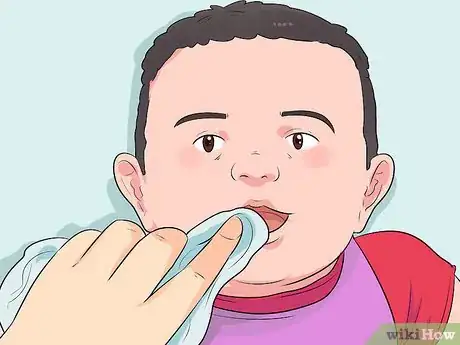
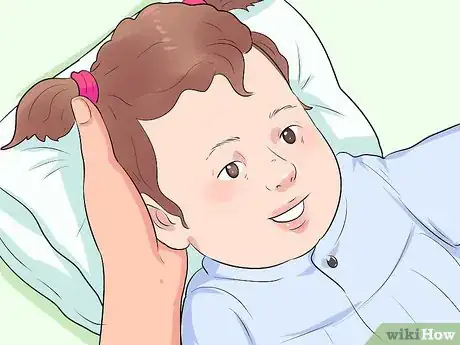
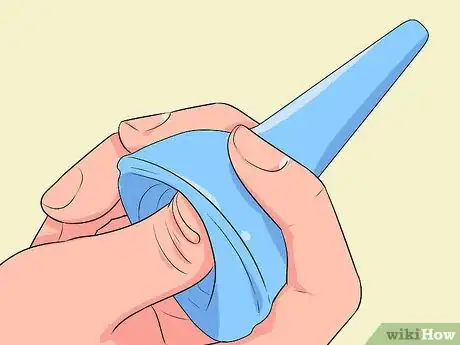
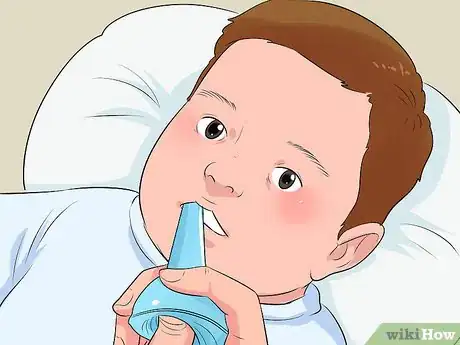
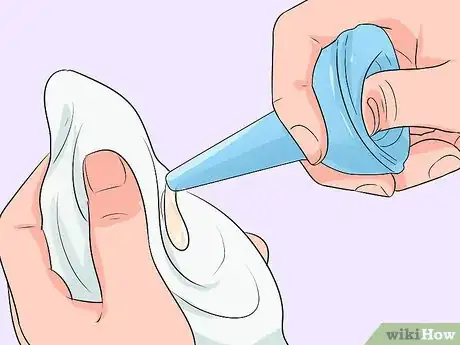
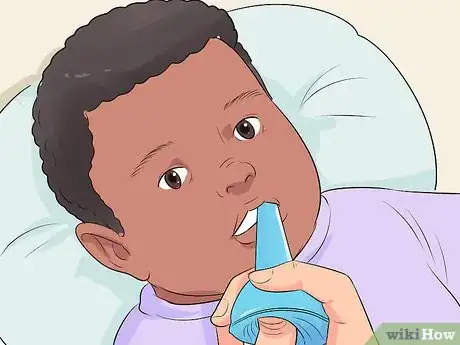
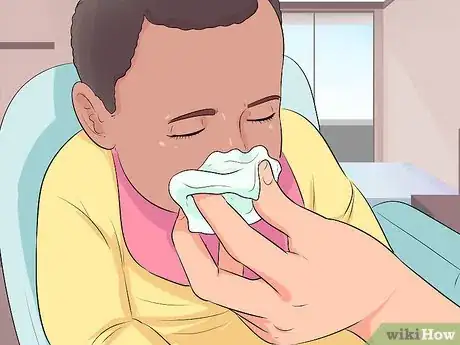
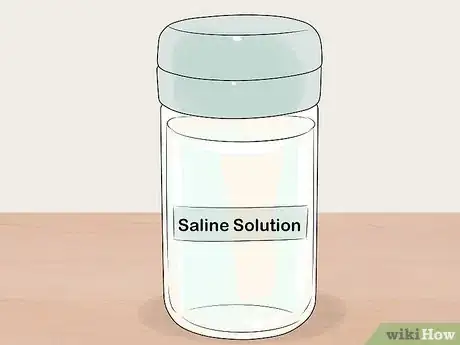

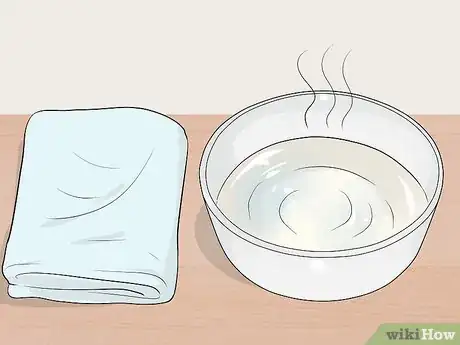

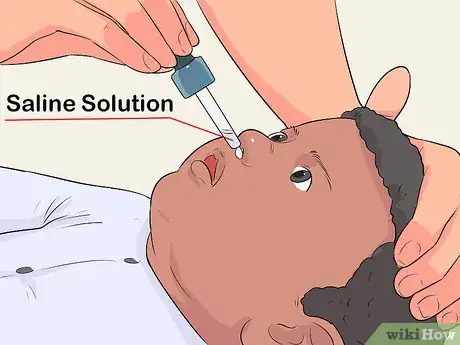
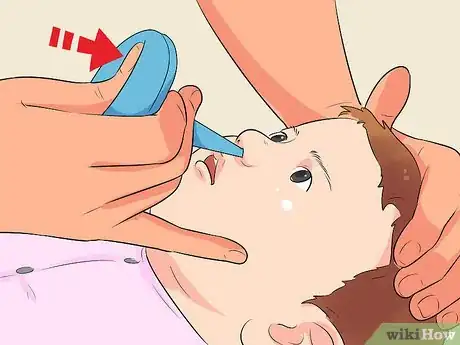

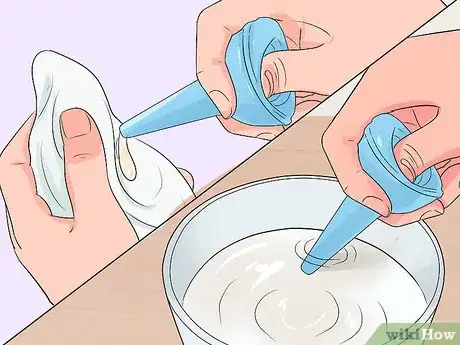
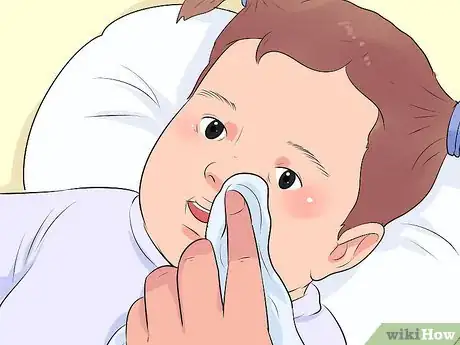
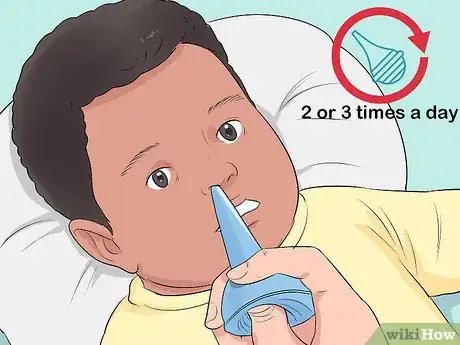

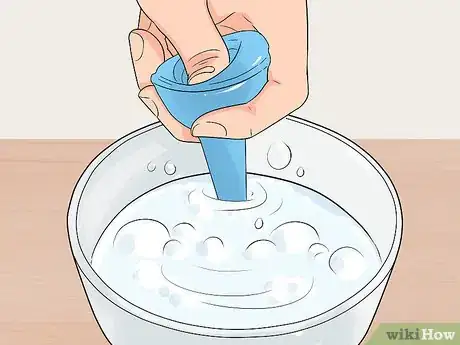
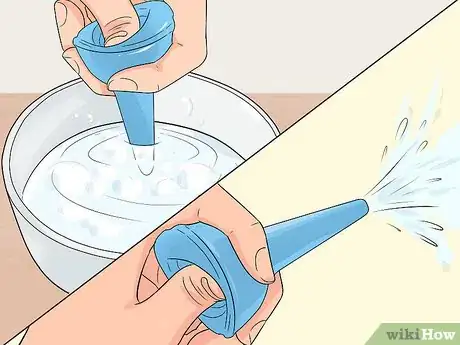
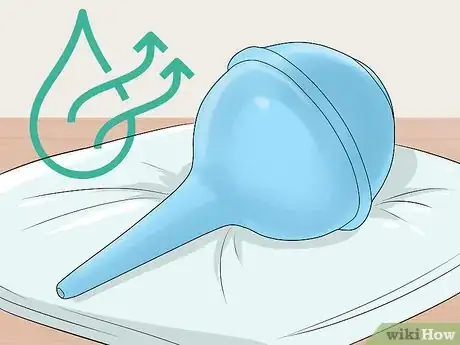
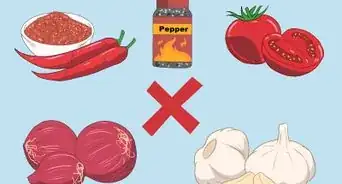


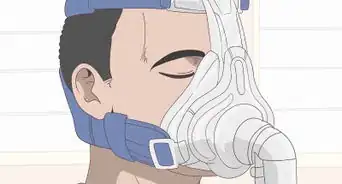

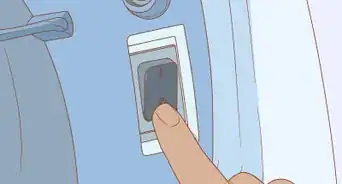
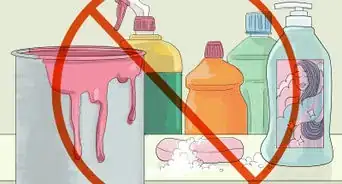

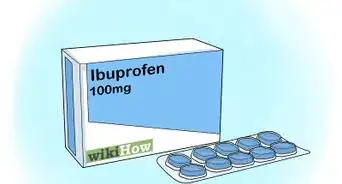


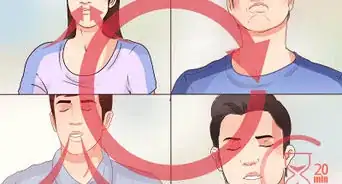








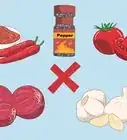







































Medical Disclaimer
The content of this article is not intended to be a substitute for professional medical advice, examination, diagnosis, or treatment. You should always contact your doctor or other qualified healthcare professional before starting, changing, or stopping any kind of health treatment.
Read More...